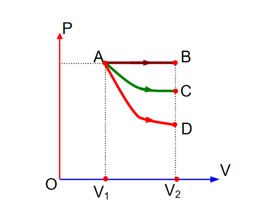Thermodynamics
Get insights from 326 questions on Thermodynamics, answered by students, alumni, and experts. You may also ask and answer any question you like about Thermodynamics
Follow Ask QuestionQuestions
Discussions
Active Users
Followers
New answer posted
2 months agoContributor-Level 10
Total kinetic energy associated with 'n' moles of monoatomic gas is =
New answer posted
2 months agoContributor-Level 10
NH2CN (s) +
![]()
=
So, magnitude of = 741 kJ/mol.
New answer posted
2 months agoContributor-Level 10
Process-AB Isobaric,
Process-AC Isothermal, and
Process-ADÞAdiabatic
W2 < W1 < W3
New answer posted
2 months agoContributor-Level 10
Process-AB Isobaric,
Process-AC Isothermal, and
Process-ADÞAdiabatic
W2 < W1 < W3

Taking an Exam? Selecting a College?
Get authentic answers from experts, students and alumni that you won't find anywhere else
Sign Up on ShikshaOn Shiksha, get access to
- 65k Colleges
- 1.2k Exams
- 679k Reviews
- 1800k Answers
